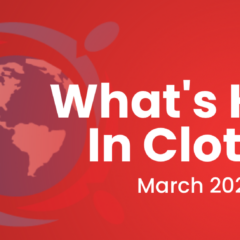Last updated on
Clot Chronicles: Challenging Situations in Patients with Cancer-Associated Thrombosis
Hello, my name is Tzu-Fei Wang. I’m a hematologist at the Ottawa Hospital and the University of Ottawa in Ontario, Canada. In this episode of Clot Chronicles, I would like to discuss challenging situations in patients with cancer-associated thrombosis (CAT).
As we all know, malignancy is a significant risk factor for venous thromboembolism (VTE). It’s estimated that up to 20% of cancer patients may develop VTE at some time in their cancer journey, which can lead to increased morbidity and mortality and delayed cancer treatment. The optimal prevention and management of CAT is therefore of utmost importance. Direct oral anticoagulants (DOACs) have been demonstrated to be effective in the cancer population in recent randomized controlled trials (RCTs), including the Hokusai-VTE Cancer, SELECT-D, ADAM VTE, and Caravaggio trials. However, cancer patients have unique challenges and comorbidities that can lead to increased risks and concerns with anticoagulation.
I want to share with you a recent paper sponsored by NATF focusing on challenging issues as part of a CAT program. We chose 10 areas where there is limited or conflicting evidence to guide best practice. In this paper, we tried to review pertinent data for each selected topic and provide guidance for patient management based on the best available evidence and experiences from the involved authors.
Here I want to show you this table where we summarized the 10 challenging situations on the left, and on the right are our suggestions for each scenario.
The first and second challenging situations are for patients with active gastrointestinal (GI) or genitourinary (GU) lesions. RCTs (as mentioned) have shown that rivaroxaban and edoxaban are associated with a significantly increased risk of major bleeding compared to the low-molecular-weight heparin (LMWH), dalteparin, and the majority of major bleeding events occurred in patients with unresected/intact GI luminal tumors. Therefore, practice guidelines—and our opinion—would give preference to LMWH in patients with active GI lesions who are deemed to be high risk of GI bleeding. The Caravaggio study (and the ADAM VTE study, which was quite small) did not show an increased risk of GI bleeding when comparing apixaban to dalteparin. Some providers may feel comfortable using apixaban in this population; however, other providers feel otherwise given the difficulty with cross-trial comparison. Therefore, consensus was not reached. A meta-analysis also showed a 5x increased risk of major GU bleeding in all DOAC trials. We still need more data to show that GU bleeding occurs in patients with intact GU luminal tumors (such as bladder tumors); however, this is currently inferred from the available data. Therefore, we propose that LMWH is preferred in patients at high risk of GU bleeding, including patients with intact/unresected GU tumors or GU manipulations such as nephrostomy tubes. In addition, in patients with conditions resulting in decreased GI absorption—such as after gastrectomy or recent GI surgery—we prefer using LMWH.
Next, I’d like to discuss concurrent drug therapies, including concomitant use of antiplatelet agents and drugs where there’s a concern for drug-drug interactions, as noted in numbers 3 and 4. Now, there are limited data in the cancer population so we had to extrapolate data from a noncancer population. Recent data show that in patients on therapeutic anticoagulation, antiplatelet agents should be minimized if possible due to risk of bleeding. In patients on concurrent medications where there is potentially high risk of drug-drug interactions, we suggest using LMWH or edoxaban (given the lack of involvement of CYP pathway).
Next, in patients with other conditions specific to cancer patients—including patients with intracranial tumors, catheter-associated thrombosis, thrombocytopenia, and hematological malignancies—data are not great and mainly come from small, single-center retrospective studies. However, one might consider using a DOAC in a similar pattern to LMWH. Lastly, in patients with renal insufficiency (especially CrCl <30), we suggest using dose-adjusted LMWH (with potentially anti-Xa monitoring). Apixaban could be considered [in the opinion of some members] based on FDA approval in this situation.
I would direct you to the full publication for more details in each of the challenging scenarios. I hope this video and the manuscript can be helpful for providers facing these challenging situations. Thank you for your attention.



